The quality of your sleep is important every night. In particular, while you are hiking, trekking, mountaineering, or walking, you need to be well-rested and alert to deal with whatever terrain, temperature, and other challenges you might face daily. When a hammock or a mere cot aren't enough to keep you warm in your tent, it's about time for a good sleeping bag!
You will have to find a sleeping bag that you can easily carry on your pack both in size and weight. Do you need it to dry quickly, provide extreme warmth, or help keep a chill on humid and hot excursions? Maybe both. There are a lot of considerations hikers have to think of going far beyond the main use of any tools and materials.
This guide is made to help you on your journey to picking the best sleeping bag for your purposes. The number one rule is to choose a sleep sack that is rated for the lowest temperatures you might experience. Then again, being prepared means anticipating that temperatures can go lower than you imagined. If that is the case, preventing frostbite by buying a more apt sleeping bag might just save your life. Plan wisely.
About Sleeping Bags
Sleeping Bag Insulation
The best recommendation for keeping warm is to make sure the bedroll holds in your body's heat while you sleep. Such insulation makes you warm and keeps you comfortable.
The insulation materials are synthetic or natural. Down is still one of the number one for its great insulating properties as well as the comfort it provides. It compresses down smaller than synthetic materials and if cared for properly will last a lifetime.
Goose down is the gold standard. The more the down lofts, the better it typically insulates. They call this fill-power. Look for a higher number to retain heat better.
If you will be in a wet place, then you need to know that the insulation properties of down fly out the window when wet. Down is renowned for taking a long time to dry. It is a costly investment up front and requires professional cleaning to maintain the integrity of the material. Would you want it bursting open and spilling feathers in your dryer? Plan on paying someone to clean it.
Synthetic materials usually mean that hollow plastic threads that trap in the warm air as a mean to insulate.
Synthetic sleeping bags are still able to insulate to keep you warm, even when they get wet. They cost less to buy and care for, and they dry much more quickly than natural down. The other upside is that synthetic material is hypoallergenic.
If you are all for lightweight, taking up less space, and a long-lasting qualities, then keep shopping. You may instead need to rely upon down to pack better, and retain insulating properties for years on end. Synthetic is a bulkier, rougher, and heavier material. It can actually lose insulating properties just a few seasons after you have used it because the material breaks down. That means while it is less expensive to buy the synthetic material up front, it is more expensive over the long-term, because you have to keep buying new ones more frequently.
Sleeping Bag Styles & Shapes
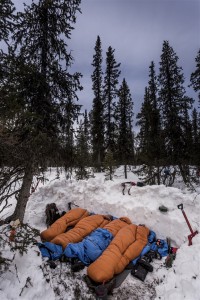
Mummy bags are great for cold conditions. They are lighter and more compact for easier packing. They are a narrow cut and have an insulated hood, which means you stay warmer because there is less air to heat. The bag is wide at the shoulders and then narrows to the feet. It does restricts movement. Consider Marmot's Sawtooth 3-season bag, which is the ideal for backpacking in my opinion.
Rectangular sleep sacksare good campgrounds. They allow better movement. Because of the open design they are not suited as well to winter use. It is good for double sleeping bags. Simply zip two together. It is not ideal for weight-conscious packing or hikers for its large and bulky dimensions.
Semi-Rectangular is a good combination of the rectangular and the mummy styles. It allows more movement but also provides warmth.
Comfort Ratings include the minimum temperature that it should maintain. Be aware that humidity and natural tendency toward feeling warmer or colder than everyone else can impact how you experience a bedroll's ability to keep you warm or cool.
Sleeping Bag Maintenance
Sleeping bags need good quality care just like the rest of your camping and hiking gear. The sleep sackis too easily left rolled up just to be tossed into the garage until next season's camping treks begin again. The problem is that a tightly wound up and "stuffed" sleep sack wears down much faster. The reason is that the insulation properties are broken down if the bag is not properly stored.
If it came in a mesh bag, store it inside this. Or, store it in a partially open trash bag or even a mesh laundry bag. This lets the bag breathe, allowing moisture to release rather than building up mildew.
Sleeping Bag Cleaning
Cleaning a bedroll is another part of the good hygiene plan. The type of insulation determines how you will care for the sleeping bag. Synthetic fill insulation is straight forward. Unzip the back and put it in a front load washer. Never put it in a top-loading washer. Resist the temptation to put it on hot water. Only wash in cold water with little soap. Dry it on low heat for up to 20 minutes.
Goose down is more challenging to wash because many require hand washing them in a bathtub. Follow that up with air drying and it is a long process. Other manufacturers will specifically state dry clean only. Goose down can be ruined by the washing machine. The oils in the feathers that insulate can be ruined by the washing machine's drastic action.
Marmot makes a washing machine-friendly sleep sack, but it is an exception to the rule. Be ready to bathe your goose. Read the instructions before you buy your goose down sleeping sack.
If down can go in the washing machine, only use a front-loading machine. You may have to take it to the laundromat, especially depending upon its size. If you will be washing the whole family's down sleeping bags and they are machine washable, it is an even more compelling reason to spend the day at the Sack o' Suds.
Use cold water only, and see if you need to put it through multiple rinses to get the soap out of the feathers. Then, dry on very low heat, and be prepared to air dry even.
That is the lowdown on how to handle your synthetic and down bedrolls for longer use. In addition, get the right shape and size for your family members.
What To Look For In Sleeping Bags For Hiking
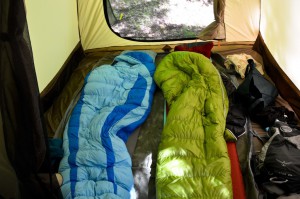
On Vancouver Island in British Columbia, the West Coast Trail has conditions that change on a daily basis for hikers. A challenging trail to hike on, it contains very diverse terrain including lots of water access. In camp, it is important to remain dry and warm and a good sleeping system is well worth researching.
Types Of Sleeping Bags
There are four types of sleeping bags that are most commonly used. The type of insulating fill material determines the type. With proper care, each has its place.
- Hybrid: Contains both synthetic and down fill within a synthetic shell
- Old Style Barrel Bag: Filled with synthetic fibers and lined with cotten
- Synthetic Bag: Synthetic shell with synthetic fill
- Synthetic/Down Bag: Synthetic shell filled with down
Strengths And Weaknesses
It is vital to know where a sleeping system will be used, which hazards are posted by the surrounding climate, and how the weaknesses and strengths can be adapted to suit that environment when planning for and creating a sleeping system. The major problems when hiking the West Coast Trail are weight and water, so I will look at how bags of various weights can handle wet conditions. All of the following are based on bags rated for -12ºC conditions.
Hybrid Bags: With both synthetic and down fill, these hybrid bags remain light and generally weight 1.6 kg. The synthetic fill is placed in a thin layer over the down top, around the neck, and at the bottom by the feet. They can be purchased for $150 from the Mountain Equipment Corp. However, when wet they do lose some insulating capacity.
Down Bags: These bags weigh in at 1.4 kg or less, which makes them one of the lightest options around. They can be quite expensive and range from $300 to $1,000. Look for them in outdoor stores where they range from good to quite technical in nature. When dry, they are very warm, but when wet, they lose their insulating capacity.
Synthetic Fill Bags: Widely available, they can be rather a bit to lift since they average around 2.4 kg. However, priced at $120, they are reasonable and even when they get wet, they still retain their insulating capacity.
Wool/Cotton Bags: Weighing in between 2 and 2.5 kg, these bags are relatively heavy. They can be found at general stores such as Walmart and Canadian Tire for around $70. They are heavy at the start and have the unpleasant characteristic of getting heavier as you hike since they soak up water. In addition, once the water content rises, their ability to keep you warm decreases.
Hiking Hazards
Once you hit the West Coast Trail, you will find yourself on beaches, near standing water, on a rock shelf with pools of water, and hiking around surge channels. Even if you have your gear inside of the pack, if you slip and fall into the water, you gear can get soaked. Rain is another significant hazard. On the west coast, downpours can quickly soak through everything you have. In addition, the air contains massive amounts of water which can be directly absorbed into a sleeping bag. Managing these hazards is covered in the next section.
How To Manage Your Sleeping System
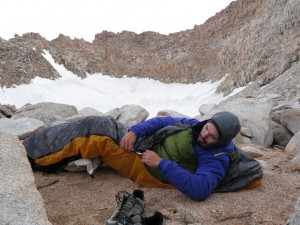
- Before you take out your bag, wipe down the tent floor if it shows any signs of moisture.
- Have a good fly for you tent and set it up to make sure there will be no splash up during the night in order to keep it water proof.
- The only time that your bedroll should be out of its container is when you are ready to sleep in it. Return it to its container right after you wake up.
- Keep a set of very dry clothing for use only inside the tent and while in your bag. Have a garbage bag inside the tent for any clothing that is damp to prevent the spread of moisture to your bag.
- Store your bag inside of a stuff sack with an extra garbage bag inside of it to prevent it from getting wet while you hike.
A down sleeping bag is rarely advised, particularly by experienced touring companies. The reason for this is that down bags pose an additional risk. However, if you are heading out alone, a down bag is okay if you understand how to manage those risks. These bags are ideal for carrying on trails such as the West Coast Trail, since they are so light. No matter what the conditions are, if you follow the suggestions for management listed above, a down bag should be fine. However, if the bag gets wet, you won't lose all of your insulating value if you travel with a hybrid bag, which makes them a good compromise.
In general, because of the weight and the coldness, it is best to avoid the cotton lined bags completely. On the other hand, while they are heavy, the synthetic inner/outer shell bags will always keep you warm. This option is your best choice even though it is always a heavy option when you don't have much experience hiking in the back country. Once you are completely comfortable with your ability to keep your bag dry no matter what the conditions are, then you should purchase either a hybrid or down bag for your next trip.
Choosing the Best Sleeping Bag for Your Hiking Trip
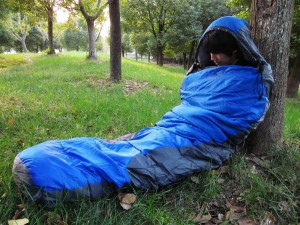
In an effort to provide improved features as well as take the science of sleeping bags as far as perceivably possible, manufacturers are introducing all new sleeping sacks featuring materials with really cool names that I will expound on later in this article.
Because hiking and sleeping outdoors is one of the great joys of life, many of you will no doubt encounter some new terminology while researching the bedroll market. Let's go over some of the materials and names you will come across so that you can make the most enlightened decisions for your outdoor gear.
The Five Innovative Types of Sleeping Bag Insulation
When searching for an adequate sleeping bag to protect you from the elements you will want to consider the five most common materials. While there are other bags made of far superior materials, these are the ones that will suit the most people — anything less than this and you may as well have only the clothes on your backs for protection.
Goose Down
The classic insulation that has been protecting your body warmth since childhood. Goose down is still one of the best insulations on the market. Meaning lots of warmth for a small-ish package.
To make all this more complex, manufacturer's attach tags to their sleeping sacks that say things like “600+ fill Goose down” — what's up with that?
This is no hocus pocus, it is called the “Fill Rating”. What this refers to is the amount of goose down that was used to fill the insulation pockets of the bag. The level of insulation that a bag provides can be indicated by the fill rating — the more feathers the better protection from the cold.
Bedrolls suitable for three seasons will usually have a fill rating of about 600— sleeping bags for all four seasons should have 900 to 1000 fill rating, especially if they are to withstand subzero temperatures.
There is a serious caveat with the goose down option; if it should get wet, it becomes useless and ponderously heavy — can't be expected to dry any time soon either. So if you will be heading out to the lake or river on a float trip keep this dollop of advice in mind: goose down bags are less than useless when they are wet. If you're going where the water is, please do yourself a big, big favor... go synthetic!
PolarGuard/Polarguard 3D/PolarGuard Delta
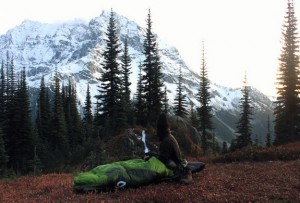
Polarguard was the first on the scene and was a bit on the bulky side although it provided great insulation. At the time of its original release, Polarguard was huge improvement on all contemporary insulation materials.
Polarguard 3D was introduced a few years later and featured a significantly less bulky design, this design was lighter as well. The insulation is great as well; expect this to provide ample warmth in all but subzero temperatures.
PolarGuard Delta is the latest design from Polarguard and is definitely the most concise. Not only is the weight and bulkiness improved on from the original Polarguard design, but it also features a 10% increased insulation protection.
But, wait; there's more! Because it is a synthetic product, Polarguard dries out very fast and this makes it better suited to most types of outdoor adventures when water in all its forms can take you by surprise.
Furthermore, the thermal protection of the bag is not affected when wet, and the bag will dry out from the body heat of a sleeping occupant. they are also easy to clean, cold water on a regular cycle and air or tumble dry as needed. All done!
Quallofil
This is a somewhat dated material you will still find in many hikers' sleeping bags and winter coats. It is pretty warm, but is also rather bulky and heavy. For this reason, not many manufacturers continue to produce quallofil lined products anymore.
Hollofil & Hollofil II
Before the advent of Polarguard, Hollofil was the best form of insulation. It's still a great option as the basement and backyard variety of sleeping bag, the ones that are not designed for roughing it out in an outdoor winter chill.
In the back country Hollofil will leave you cold. It's an obsolete material. If you're thinking about Hollofil, just go with Polarguard in stead.
Thermolite
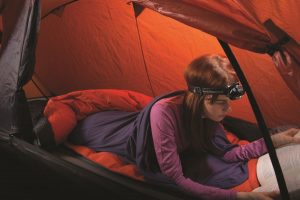
But it will not serve you on the trail, where you will freeze in the middle of summer.
In the end, you will need to consider your destination when choosing sleeping bag to make sure you are provided with sufficient warmth. Selecting a formidable insulator that will survive the cold of Montana and still provide a comfortable place of repose if exploring the deserts of the Southwest may turnout to be the most economical option.
Temperature Ratings Of Sleeping Bags Explained
When you shop for sleeping bags, you'll quickly note that they all have temperature ratings. What you may regrettably discover is that these ratings are sometimes wrong. In many cases, they are severely wrong.
It's easy to think that the makers of sleeping sacks are the ones responsible for the incorrect labeling, there's actually a little more complexity behind it than that. The following paragraphs within this article go over how bedroll manufacturers determine their ratings, and then there is further explanation about additional factors that impact temperature ratings of sleeping bags. You might even want to check out other articles around this website regarding finding the right bedroll.
The Meaning Behind Sleeping Bag Temperature Ratings
The temperature ratings of bedrolls are really just educated guesses on the part of manufacturers as to how warm each bag would keep a normal person. These ratings are done by letting employees and other testers use the bags in a number of different sleeping conditions, including ice boxes.
Winter Sleeping Bags Made With Goose Down
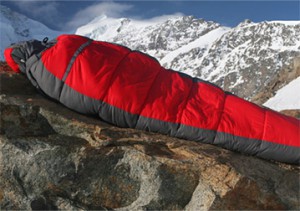
Just what are warmer and colder sleepers? A good example is to consider the bed you sleep in at home. If you live in a typical home, your bed is probably heated to room temperature, or about 65 degrees Fahrenheit in the winter.
Warmer sleepers sleep with very few sheets over them, if any at all. A warmer sleeper might start the night with a sheet over them, but subconsciously toss them aside throughout the night. Warmer sleepers also generate a lot of heat on their own. If you share your bed with another person and they remark about how much hotter the bed is with you there, you're likely one of the warmer sleepers.
Cooler sleepers climb into bed with each and every sheet and blanket they can find and bury themselves, yet still wake up shivering. A slow or low metabolism at night is a usual cause behind this. Cooler sleepers don't generate a lot of physical body heat, so more blankets are necessary.
How Your Sleep Temperature Affects Your Sleeping Bag
Once you figure out whether you sleep warmer or cooler, or maybe somewhere in the middle, then you need to figure out how to buy the right bag.
This is tricky, because it's not an exact science, but based on the experiences of others ahead of you, you can gauge a good bag from a bad one. The advice and experiences is listed as follows:
Warmer sleepers: Always make the assumption that the temperature rating of a bedroll is accurate.
Cooler sleepers: Make the assumption that the temperature rating on the bag is at least 10 degrees warmer than what the label or packaging says. So, if it says that it's okay for 30 degree weather, you're only okay in 40 degree weather or above. Even adding 10 degrees might not be enough.
Anyone else: If you're not warmer or cooler, by the provided definitions, then it's a safe assumption that you need to add five degrees.
Additional Factors Impacting The Temperature Rating Of A Sleeping Bag
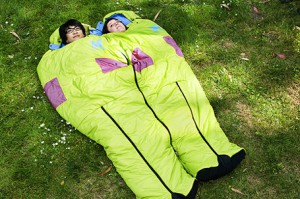
A fully zipped bag: This might strike some as obvious, but all industry temperature ratings make the assumption that you are sleeping in a bag that is fully zipped closed. Not all campers do this though, as many leave the bag partially unzipped in order to have some wiggle room.
The use of a sleeping pad: No sane person sleeps on cold ground without a sleeping bad, even if they're a warmer sleeper. Sleeping pads have R Factors to measure their levels of insulation. Midrange and premium pads have R Factors of 5 or greater and are more thickly insulated than cheaper or lightweight pads. You can distinguish these because they're typically rated 4 or lower. Manufacturers of sleeping sacks assume you're on at least a midweight pad.
A bedroll size that fits: When you buy a bedroll for hiking, be sure that it matches your height. If you are 5'5, then don't get a bag that fits someone taller than 6 feet. Bags that are too long or big can capture cold air pockets around your feet, chilling you all through the night.
Hood use: The majority of three-season sleeping sacks have a hood. Temperature ratings on sleeping bags assume that the sleeper has the hood drawn in tight fashion around their head. Keep in mind that half of your body heat goes out of your head, so use of a hood can make your night very comfortable or very chilly.
Sleeping in your undies: Temperature ratings on sleeping bags actually do make the assumption that you are either nude or wearing just your undies. The reason for that is that sleeping with your clothes on can make you cooler. This is especially true of cotton clothes, since cotton absorbs sweat. Once the sleeper is wet, the bedroll can't possibly provide you any insulation anymore.
Useful Shopping Ideas
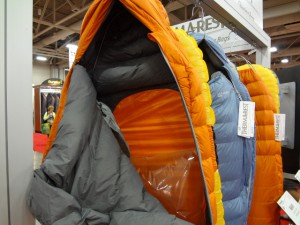
For camping in summer: Aim for a synthetic bag, unless you are confident you can keep your bag dry all the time. A synthetic bag dries fast and won't suffer a loss of insulating functions when it is wet.
Temperature rating: Even in summer, a bag rated for negative 20 is a good idea for camping in Wyoming and other high altitude or mountainous areas. Positive 30 to 40 degree bags are better for warm climates.
Bike camping: Waterproof, goose down bags are ideal for biking, due to their low weight and ability to be compressed safely. Just make certain you have a waterproof storage solution handy.
Goose down versus synthetic: Synthetic is typically ideal for summer trips, since synthetic bags dry faster and still function when wet. Goose down does a good job of balancing maximum warmth for minimum weight, provided the camper can keep the bag dry at all times.
Choosing the right temperature rating: When you need to choose how warm or cool of a bag you need, common sense from previous experts and owners advise that you add 10 to 15 degrees Fahrenheit to the labeled rating. So, a bag rated for 30 degrees is actually good at 40 to 45.
Where to purchase: A number of online retailers offer great sleeping bags for hiking at affordable prices. If you're not sure where to start, Moosejaw has a very organized page that provides thorough technical specifics for each bag that is on sale.
Best Hiking Sleeping Bags Top 10 Review
1. Therm-A-Rest Auriga Blanket
This sleeping bag is ideal for mountaineering or ultralight hiking. It is a perfectly shaped top quilt consisting of an ample foot-box. The freedom of movement and temperature regulation qualities are excellent in this sleeping sack. Since the bag doesn't come with a back, it should accompany a sleeping mat. When used in the proper way, the elasticized foot box and draft tubes create a seal around the sleeping mat which helps keep the drafts at bay. The Therm-a-Rest Auriga Blanket comes with a Loop Kit and side snaps which help attach it to the sleeping mat. This bag can be easily used with another mummy sleeping bag to reduce heat loss. If you are searching for a lightweight bedroll with a volume of 11, this is the best choice for you. But remember that you can only use this bag during summer months.
2. The North Face Gold Kazoo
This is an affordable sleeping bag that is ideal for all three seasons. It offers great functionality for such low price. The outer layer of the bag is made of Nylon Rip-stop. This material is durable enough to resist severe weather conditions. The insulation layer of the bag is manufactured of Hungarian goose down which is considered the finest quality down available today. The inner layer provides great comfort since it is quite soft. The Gold Kazoo also comes with internal pockets and a full-length two-way zip. There is a glow in the dark pull loop. The hood comes with a draw-cord which helps seal in the heat. The fit is ideal, and the North Face Kazoo is one of the best sleeping bags for hikers who are looking for a three season, budget hiking bag.
3. Montbell Down Hugger 800
The Montbell Hugger 800 offers extreme comfort and thermal efficiency because of its ultimate lightweight fabric. The bag is popular for its flexibility and elasticity. In fact, the elasticity allows the bag to remain close to your body and protect you against heat loss. It contains a good fitting hood with a draw-cord for adjustments. The zipper comes with an auto lock function which will help protect you against zipper slip during the night. You will receive a tapered stretching sack with the product for easier packing. This sleeping sack is made of DWR treated material which is water-resistant. Anyone looking for a hiking bag with excellent thermal efficiency qualities, this is the best sleeping bag for them.
4. Sierra Design Mobile Mummy
The Sierra Design Mobile Mummy is an innovative hiking sleeping bag which offers all you need for a good sleep. That is not all; the bag stays with you even when you are up. The self-sealing arm port allows you to put your arms out if required while sleeping. There is a foot-box that allows you to tuck it away and walk around. It helps increase the ventilation inside the sleeping bag. Although the Sierra sleeping bag is ideal for summer months, it also helps keep you warm when using it during the cold winter months. The hood will fit comfortably around your face because of its perfect design. There is a two-way zipper that is centrally placed to provide excellent ventilation in hot weather conditions. The hiking bag also dries quite fast due to the material used to manufacture it. If you are looking for an innovative sleeping sack with great functional qualities, you should not miss the Sierra Design Mobile Mummy hiking bag.
5. Therm A Rest Antares
The Therm-A-Rest Antares is a three season hiking bag that comes in an ultralight package. The inner and outer layers of this bag are made of nylon. Warmth is maintained by a goose down insulation layer. This bag is manufactured to work in tandem with a Therm Rest sleeping mat. Synergy Link connectors are fixed to bring them together which will decrease the possibility of you slipping from the sleeping mat. But the problem is when the bag and the mat are connected, you can't roll freely to sleep on your side or any other position. You can find yourself rolling inside the sleeping bag but not with it. But you can avoid this issue by not connecting them. The bottom of the bag is not insulated since it is meant to be used with the mat. Although this is a great sleeping bag, it becomes useless without a mat. The bag is great for anyone who do not mind carrying a full package on their hiking trip.
6. Gelert's X-Treme Lite Style 600
The Gelert's X-Treme Lite style 600 is a great pick for the warmer months. It is an all-around comfortable sleeping bag that is lined with synthetic material.
The hood does have a good draw cord closure that fits well. It has a nylon shell that is soft so it feels good. It is light at one pound twelve ounces, which works well for longer hiking and camping trips.
This is a great bag for its simplicity. It does not contain as many bells and whistles as other bedrolls, nor is it equipped for the cold weather. Though, the price is excellent if you are on a budget and will be outdoors during warmer months. The rest of the bags on the top sleeping sack list are more costly, but also offer more benefits.
7. Marmot's Plasma 30
Marmot's Plasma 30 is an excellent 3-season sleeping bag. It is also very lightweight thanks to its Pertex Quantum Ripstop material complete with a durable water repellant treatment. If you are allergic to down, a word of caution here. Marmot uses 875+ fill power goose down to insulate this bedroll. Yes, it makes it comfortable and warm, but it also can make for a sneezy night of sleep if you are allergic.
Pertex Quantum is the lightest down fabric that is available on the market today. It weighs in at only 30 grams per square-meter. It is also a particularly strong fabric for its light weight too. It has the added bonus of being windproof, which is essential for many hikers and campers who will be taking to higher altitudes.
It is a material that is widely relied upon and in use for production of both windproof and waterproof hiking clothing as well. Either way, it makes for a very warm and durable sleeping bag. It is an excellent bag, and depending upon your hiking needs, it may be money well spent.
8. Kelty's SB 20
Kelty's SB 20 is another sleeping bag for camping. It is a part of the company's TraiLogic Collection, which encompasses backpacks, sleeping mats, sleeping sacks and tents. They are designed to work well together and to be compatible for high functionality.
The items are all available separately, though if you are in the market for a whole new set -- consider the Trailogic products. Its SB 20 sleeping bag has the added draw of lightweight material and DriDown insulation. It is excellent at keeping you both warm and also dry.
DriDown is warmer and superior to regular down at keeping you dry. It also is able to remain dry 10 times longer than regular down. Additionally, DriDown dries at a much faster rate than regular, untreated down.
The outer most layer is Nylon Ripstop that provides additional protection from water at both the hood and foot. The price is lower than the Marmot Plasma and Rab Neutrino, while providing good performance for hikers, backpackers, and mountaineers.
9. Mountain Hardwear's Ratio 32
Mountain Hardwear's Ratio 32 is a multi-purpose hiking sleeping bag with great reliability and performance in various conditions. DWR fill provides the insulation and comfort. It is treated with Q Shield Down for good performance in humid conditions and also through cold temperatures.
It has a two-way zipper along the side. It has good ventilation for use in hotter temperatures too. The hood closure offers adjustable draw cords. The bag’s baffles effective at eliminating potential cold spots.
The Mountain Hardwear Ratio 32 is another high-performance sleeping bag. It is an excellent multi-purpose bedroll that is also lightweight.
10. Rab's Neutrino 600
Rab's Neutrino 600 is lightweight by design. If you are particularly concerned about every ounce of weight, this bag might be the one for you. It is made from Pertex Quantum, which -- again, is an excellent fabric that provides insulation even when it gets wet.
The zip runs smoothly and is also durable, extending down to the calf. The foot box is angled for protection against drops in temperature. The collar and hood drawcord make for a good fit. It is heavier than some of the other bags on the list. Though, it is very comfortable and has excellent functionality.
[toc]


0 comments